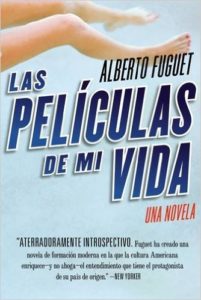Pablo Neruda’s Oda al tomate is probably the most famous food poem in Spanish literature, but I’ve now found my personal favorite: José María Pemán y Pemartín’s Oda a la paella. This poem celebrates the way that paella respects its individual ingredients while achieving a harmonious whole. I’ve added a rough translation.
¡Oh insigne sinfonía de todos los colores!
¡Oh ilustre paella
por fuera con su blusa de colores,
quemadita por dentro con ansias de doncella!
¡Oh policromo plato colorista
que antes que con el gusto se come con la vista!
Concentración de glorias donde nada se deja.
Compromiso de Caspe entre el pollo y la almeja.
¡Oh plato decisivo :
gremial y colectivo!
¡Oh plato delicioso
donde todo es hermoso
y todo se distingue, pero nada está roto!
¡Oh plato liberal donde un grano es un grano
como un hombre es un voto!
Oh famous multi-colored symphony! Oh illustrious paella on the outside a colorful blouse, burning from within like a yearning maiden! Oh polychromatic, colorful dish that your eyes enjoy before your stomach! Concentration of glories where everything counts. Spain’s compromise between chicken and clams. Oh decisive and collaborative dish! Oh delicious dish where everything is beautiful and everything stands out, but nothing is broken! Oh generous dish where one grain of rice is one grain just as one man is one vote!

I came across Pemán’s Oda in the Spanish novel I’m currently reading: Los mares del Sur, one of Manuel Vázquez Montalbán’s many mysteries featuring the detective Pepe Carvalho. Vázquez is passionate about food — he has written a number of cookbooks — and food figures heavily in Los mares del Sur. Vázquez reproduces the Oda in a chapter about a feast Carvalho enjoys with friends from his native Galicia. Paella is on the menu and the feasters have a vigorous discussion about whether or not onion is an allowed ingredient, regional paella differences, how much pepper to add, and so on. They enjoy the paella a lo rural (‘country style’), meaning that they eat straight out of the dish, each choosing some territorio (‘territory’) within the dish — a good way to avoid one eater’s hogging all the best ingredients!
I don’t remember where I saw Los mares del Sur recommended, but Wikipedia tells us that it won the Premio Planeta in 1979, and also made one Spanish newspaper’s list of the 100 best Spanish novels of the 20th century — not bad for light fiction. It has also been made into a movie.
I’m now past the halfway point in Los mares del Sur, and so far it reminds me of a slow train ride with beautiful scenery. In other words, Vázquez takes his time with the plot, but the book has wonderful descriptions of people and places along the way. My favorite aspect (besides the paella poem) is Vázquez’s sly sense of humor, as when he describes a group of mismatched chairs as sillas de diferentes padres. I’m finding something laugh-out-loud funny every few pages. Another plus, for me at least, is that the novel is set in post-Franco Barcelona and thus provides a historical counterpart to the various Jordi Sierra i Fabra mysteries I’ve been reading, which take place in Barcelona just before and during that time period.






